Should I have my stucco redone first, or have my roof job done first?
I am thinking stucco first, as I have parapet work that needs done
Put the roof on first, with a few exceptions.
The exceptions are when there are roofs that can't be walked on, without possible damage to the roof.
Examples of roofs that can't be walked on are: slate, spanish tile, some copper roofs, and aluminum roofs. In this case it is necessary to put on a counter flashing first, stucco next, overlapping the counter flashing with stucco, then put on the finished roof.
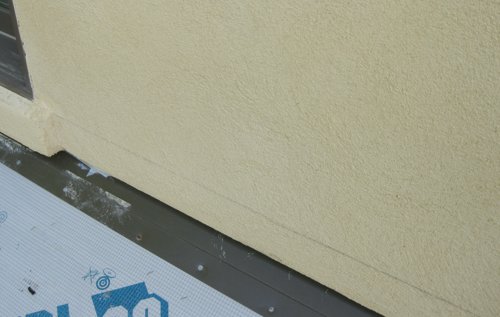
Factory made counter flashing is put on before the stucco, and the stucco is finished. Aluminum roof panels will slide into the slot.
Aluminum roof manufacturers at make a counter flashing that works with their roofs, not only with the color, but allows the roof panels to snap in or slide under the counter flashing AFTER the stucco is finished.
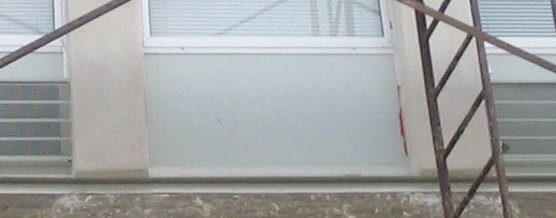
Factory made counter flashing is put on before the stucco, and the stucco is finished. Aluminum roof panels will slide into the slot. Roof contractors can also make there own.
As far as slate or spanish tile goes, a counter flashing can be made first that allows the flange of the roof panels to slip underneath.
More about slate roofs here....
For slate and spanish tile, A counter flashing is put on first, before the stucco, with room to allow a step flashing to be put on with the roof tiles.
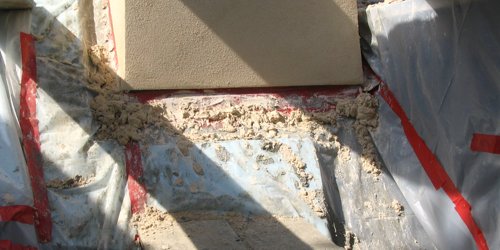
Shingle roofs and rubber membrane roofs should be covered up real good with plastic, dropcloths, tar paper, etc. to prevent mortar from splattering on the finished roof. It is next to impossible to clean portland cement off of roof shingles.
On rubber membrane roofs, the cement mortar can cause damage beyond repair. These roofs puncture easily and must be kept clean during stucco application.
Stepping on a nail can puncture the roof. Even a dry chunk of mortar can puncture a roof if stepped on. I have heard that cement mortar can dry out on the rubber membrane, making it brittle and compromising the life of the roof.
A good way to cover roofs for stucco installation, is tarrpaper taped down. On flat,rubber membrane roofs we usually cover the roof with plastic or tarpaper, and put a layer of masonite on top. The masonite keeps the plastic from ripping.
On rubber membrane roofs: A "T" bar, or terminator bar must be put on the edge of the membrane,and the stucco can then overlap the edge of the membrane.
A counterflashing over the edge of the membrane sure can't hurt either. Look at it as cheap insurance against leaks.
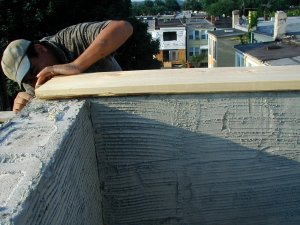
Block parapet wall
A two by ten is set for a nailer for the coping. The wood also serves as a ground for the stucco. A ground establishes a straight line as well as the wall thickness.
A two by ten is just right- 9-1/2" wide. 8" block+3/4" stucco+3/4" stucco on other side equals 9 1/2" exactly..
You want to always put on the coping AFTER the stucco. Coping flashing is the three sided flashing covering the top of a parapet wall.
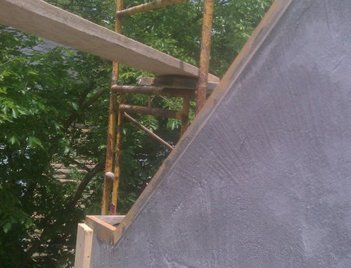
Another parapet wall. A 3/4" furring strip is used as a ground at the top.
The brown coat is applied and rodded off the ground. The ground also serves as a nailer for the coping.
Without this nailer,the coping would have to be nailed through the stucco, leaving a dented up mess. Of course this could be drilled and put on with anchors, but it would take a long time. Screws or nails are fast and frustration free.
Another advantage of screws is that the coping can easily be changed in the future, if necessary.